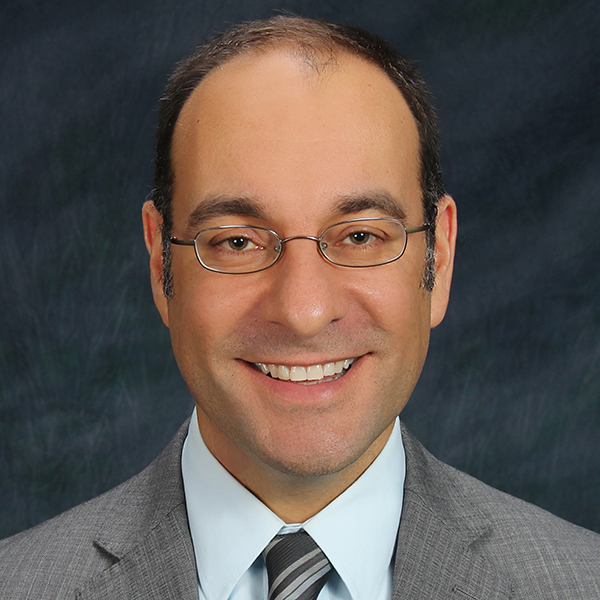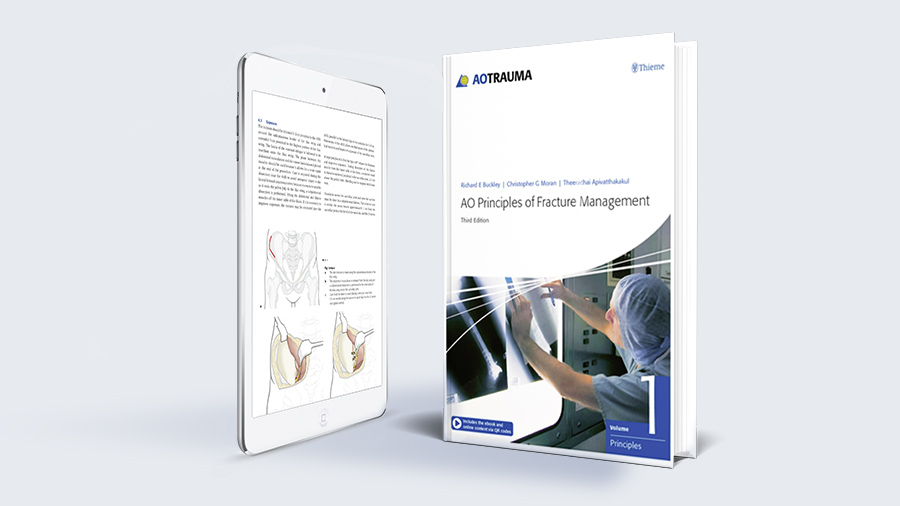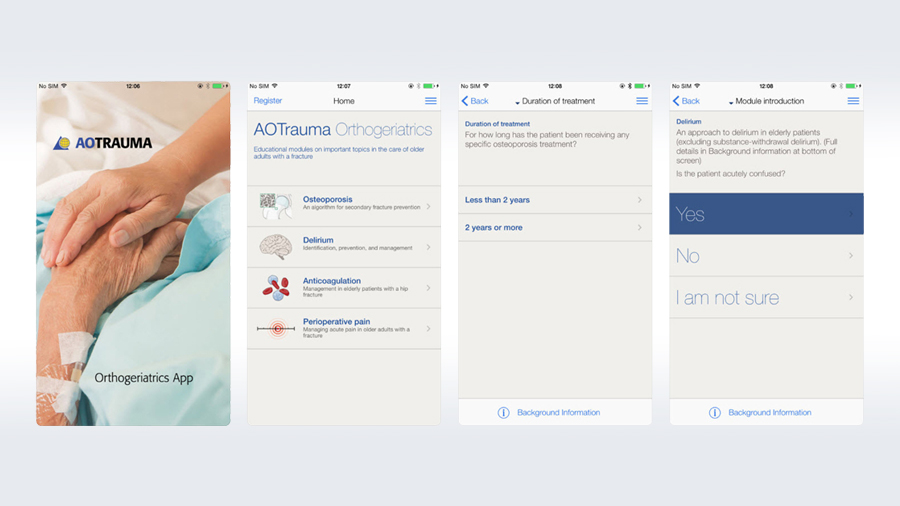Ortho-geriatric co-management: transforming fracture treatment and prevention in older adults
BY DR JOSEPH NICHOLAS

As populations get older, the incidence of fragility fractures is escalating worldwide. But traditional surgical intervention for these fractures has not accounted adequately for crucial patient factors such as medical comorbidities, cognitive impairment, and physical frailty, leading to suboptimal results. However, a paradigm shift is underway with the emergence of ortho-geriatric co-management models—a collaborative approach that is yielding remarkable improvements in patient outcomes.
Our society is aging. And as populations get older, the incidence of fragility fractures is becoming ever higher mainly due to osteoporosis and the soft bones that people get as they age. So almost every country is seeing a huge rise in the number of older adults who suffer osteoporotic fractures of the wrist or hip, many of which will require surgical intervention.
But for the fragility fracture patient, it's about more than just surgery. The older adult very often has other medical comorbidities—and without also managing these properly, we cannot achieve the outcomes that we as physicians, and our patients, want. Even in the absence of specific co-morbidities, many fragility fracture patient s are frail.
When we talk about frailty, we’re referring to the aging of the important hardware of the body, and the difficulty with recovery from surgery, illness, or immobility. All the organ systems start to fail slowly with age but especially the neurologic system and bone and muscle—i.e., osteosarcopenia, the co-existence of osteoporosis and sarcopenia. Osteoporosis being the deterioration of bone mass and tissue, sarcopenia being the loss of muscle mass, strength, and function. This makes the body susceptible to injury but also makes it harder to recover from surgery and more difficult to tolerate different medications.
Osteoporosis = deterioration of bone mass and tissue
Sarcopenia = loss of muscle mass, strength, and function
Osteosarcopenia = co-existence of osteoporosis and sarcopenia
However, since most of our studies—and most of our thinking—are on populations who don't have frailty, we often misapply the principles we learn in a younger non-frail population to older adults, and we don’t get acceptable outcomes. . So, it's essential for all of us as physicians and surgeons to understand that the frail body is more delicate and will not respond to stress or injury in the same way and needs to be managed in a specialized fashion.
The ortho-geriatric co-management model
Traditionally, if the patient had a broken bone, their physician would send them to the surgeon and assume the surgeon would manage everything that is needed to make the patient better. As for the non-surgical factors that would be important to recovery, the surgeon might assume that that the geriatrician or the outpatient physician would address these. In the absence of a systematic team based approach, many patients didn’t always get the best treatment for osteoporosis or didn’t have their medications adjusted in anticipation of surgery—basically didn’t get the type of care that AO and other organizations have shown is vastly superior to usual surgical care.
Thanks to the vision and efforts of Stephen Kates and Daniel Mendelson at the University of Rochester developed an efficient an orthogeriatric co-managed system and the results have been dramatic. We have seen huge reductions in length of stay, mortality, and complications among older patients. I often say that if we had a pill that could what co-management has achieved, pharma would make a fortune. We don’t have that pill, but we do have teams that think of better ways to care for their fracture patients.
The ortho-geriatric co-management model means equal ownership of the patient and their care between the surgical team and the medical team. As soon as a fracture occurs, both teams are involved in planning for the care for that patient. The geriatrician is involved directly in preparing the patient for surgery as quickly as possible, usually within 24 hours, and the surgeon prepares the operating room and the procedure that will allow the patient to have one-shot surgery and to regain function and get on their feet by the next day.
The involvement of the geriatrician is important because they deal with frail patients on a daily basis, both in their office and in the hospital. They know which medications the patients are taking that may present a problem during the surgery. They are also better able to craft a medical plan that will help the patient to recover from surgery. They pay attention to things that might otherwise be overlooked, problems that someone must make the surgeon aware of.
The teams work together throughout the entire hospitalization to make sure that medical comorbidities and other problems are either avoided or well-managed. These include delirium, excessive low blood pressure, pain control, which are all managed by both a medical and a surgical team to make sure that the patient is walking, sleeping, and eating as early as possible—the three pillars that every patient needs to be able to recover, but which medical and surgical care can often interrupt.
In addition to the surgeon and the medical physician working together, nursing is another very essential pillar to include in the care. The anesthesiologist and the emergency department physician are also involved, as are physiotherapists and even social workers for discharge planning. Not all of them will see the patient every day. But the essential core team is the surgeon, the nurse, and the geriatrician.
Common perioperative issues for of fragility fracture patients
Expertise in common perioperative medical issues is essential because older and/or frail patients differ from younger patients in a number of ways that need to be addressed.
First of all, pain management becomes essential to outcomes. Most fragility fracture patients don’t have the reserves to tolerate pain for very long. Inadequately controlled pain can even cause delirium which can prevent them from having surgery because they look too ill or are in too much distress.
Many common factors (bleeding, anesthesia, medications) also conspire to lower the blood pressure. So, it is important that the surgical team anticipates this and can adjust medication to keep blood pressure stable—usually stopping blood pressure medicines and providing either blood or intravenous fluids.
Post-operative delirium is another common issue, a classic sign that the body is not equipped to heal. It can be provoked by pain, inadequate sleep, or even the new medications the patient is taking. The delirious patient cannot adequately participate in physical therapy, doesn’t eat well, doesn’t sleep well, which can be disastrous for recovery. Involving specialists like a geriatrician to help create a medical plan that minimizes and shortens this delirium is 100% essential. If the patient is not delirious, you're probably doing something right. If they are delirious, there's still work to be done.
And by delirium, we don’t just mean patients screaming or shouting, which is only occurs in about 25% of delirium. We all recognize hyperactive agitated delirium, but a more common form is hypoactive delirium, where the patient is withdrawn and confused and maybe not eating. We may like these patients because they're not bothering us which allows us to do our rounds quickly. We might think they are just sleepy. But what is happening, is the brain is not working properly and the patient is not getting stronger and improving.
If we see patients not awake, not interactive and alert on postoperative day one, two, or three, we should think hard what is holding them back. Is it the medications? Is it pain? Is it because they are not sleeping well in the night and we should adjust our plan to give them good sleep, keep them awake during the daytime?
We all know how bad we feel when we don't sleep, if we don't eat and move. Everything we do in a hospital interferes with normal routines. If you take a frail older person and interrupt their sleep by checking the blood work early in the morning, if they don't eat for a few days and just lie in bed, how can we expect them to ever recover? We need to do everything the science tells us to do, but we need to do it in a way that supports the body’s recovery.
This is why the ortho-geriatric model has been successful and has led to improved outcomes. It also makes these patients easier to partner with. They are often the most complicated patients the surgeons must care for—often the surgery is straightforward, but then they aren’t well enough to leave the hospital, which is upsetting for the patient and the family. With this collaborative care model, the care and the patient-family-surgeons’ interactions typically improve.
As a trauma surgeon, you can also take the initiative in setting up an ortho-geriatrics taskforce in your hospital. First, identify who will be the surgical champion. If that is you who is reading this, that's wonderful! Then, identify at least one medical partner—a geriatrician if you have these in the hospital, or an internal medicine physician, someone who you can work with to get patients to rapid surgery and who can see these patients daily and make sure that the postoperative period is actively managed in the best possible way.
The bigger the team the better, but these two people are essential to get started. And once you have that set up, you can reach out to us at AO, and we can help with training. AO has many online resources, webinars, order sets, protocols—even data that will help justify the financial costs that this might incur so that you can work with your administrators to get you on the right footing.
Osteoporosis treatment and prevention
The ortho-geriatric model focuses not only on surgery but also on future prevention and osteoporosis treatment, which is an exciting growth area. The big problem for orthopedic surgeons is soft bone, osteoporosis, and how we can better manage it so that future fractures don't happen or that the trauma at least isn't as severe. The recent advances in medication have been rapid. Most older drugs were only anti-resorptive and would prevent further bone loss, but the newer drugs can promote bone growth and are anabolic. Most important is to have a system in place, so that osteoporotic patients are identified and tracked going forward to ensure these medications are offered in the first place.
Sometimes the geriatrician or the surgeon can initiate such therapies. Some centers offer a fracture liaison service where patients are identified in the hospital, and someone is tasked with arranging a follow-up with a metabolic bone specialist within a few weeks so that treatment and screening continue. When we see a fracture, an important task for us is preventing new ones, to prescribe calcium, vitamin D, and occasionally bisphosphonates, or to involve specialists for the next steps for things such as anabolic agents, when appropriate.
Prevention can begin almost immediately following surgery. The best studies we have shown that starting osteoporosis treatment immediately does not affect fracture healing or cause other problems. If you start immediately, it is most likely to be continued in future. Often, if we don't start immediately, something happens and medication does not get started at all, or the patient does not make a next appointment. If you live in a country that doesn't have a tightly controlled registry where these patients can be identified, the next time you'll see them is with a new fragility fracture. You’ll be doing your second hip surgery on a patient who's never been treated for osteoporosis and that's always very sad.
Of course, there are always financial concerns and there may well be additional costs associated with building an orthogeriatrics team as discussed above. The cost will depend on your own healthcare environment. But the evidence shows that this model provides better care for the patient, better outcomes for everyone, and saves more money in the long run. Providing incentives to build such teams is already happening in the UK and is starting in other places around Europe and the US is starting to develop similar mechanisms. But there is room for improvement!
Hospitals will invest if it makes financial sense. I already know from personal experience that clinically it makes sense for our patients, and I would argue it also makes the best financial sense for society as we continue to live longer, and hopefully healthier, lives.
Watch the video
Joseph Nicholas and Christian Kammerlander discuss the impact of frailty on surgical readiness on AO TV, December, 2023.
About the author
Joseph Nicholas is a Professor Of Medicine at the University of Rochester and the Associate Chief of Medicine at Highland Hospital, Rochester, NY, USA. His clinical practice is through the inpatient geriatrics service as part of the Highland Hospital Geriatrics Group. His academic interests include clinical reasoning and decision making, co-management of geriatric surgical patients, and medical education. Joseph Nicholas is also a program editor for the AO Trauma Orthogeriatrics education taskforce.
References and further reading:
- Orthogeriatric co-management improves the outcome of long-term care residents with fragility fractures | Archives of Orthopaedic and Trauma Surgery (springer.com)
- Frailty and Short-Term Outcomes in Patients With Hip Fracture - Elizabeth A. Kistler, Joseph A. Nicholas, Stephen L. Kates, Susan M. Friedman, 2015 (sagepub.com)
- Fragility non-hip fracture patients are at risk | Archives of Orthopaedic and Trauma Surgery (springer.com)
You might also be interested in:
AO Trauma Curriculum Courses
Explore the interdisciplinary program on fragility fractures and orthogeriatrics and other competency-based curriculum courses.
Osteoporotic Fracture Care
The first book of its kind to offer a well-rounded and comprehensive resource on medical and surgical management fragility fractures and orthogeriatric care.
Mobile apps and more
Explore the AO Trauma Clinical Library and Tools for a collection of resources designed to develop your competencies and improve patient care.



